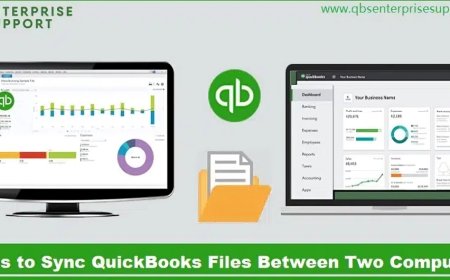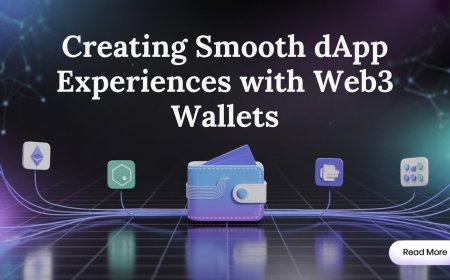How Document Generation Software Transforms Customer Experience Management
Discover how document generation software enhances customer experience management by improving speed, personalization, and operational efficiency.

Customer expectations are higher than ever. In todays digital world, businesses must deliver fast, personalized, and seamless experiences to win customer trust and loyalty. A critical, yet often overlooked, component of this experience is communicationespecially the documents customers receive.
From contracts and invoices to onboarding documents and support confirmations, customer-facing documents are key touchpoints. This is where Document Generation Software (DGS) plays a transformative role in Customer Experience Management (CXM). By automating the creation of personalized, accurate, and timely documents, companies can drastically improve the customer journey.
What is Document Generation Software?
Document generation software automates the creation of business documents based on data from multiple systems such as CRMs, ERPs, or databases. It enables users to generate documents like contracts, proposals, letters, reports, and moreusually in PDF, Word, or HTML formatswithout manual intervention.
Modern document generation platforms come with features like template management, conditional logic, e-signatures, workflow integration, and multi-language support.
The Link Between Document Generation and Customer Experience
Documents are often the bridge between companies and customers. A poorly formatted invoice, a contract with errors, or a delay in sending out policy documents can sour a customers perception. Here's how document generation software helps elevate customer experience:
1. Speed and Efficiency
Manually creating customer documents is time-consuming and error-prone. Automated document generation speeds up this process significantly.
-
Instant document delivery: Generate and send documents immediately after a customer action (e.g., signing up, making a purchase).
-
Reduced turnaround time: No need to wait hours or days for a representative to draft and send a document.
-
Real-time updates: Changes in customer data can be reflected in real-time in generated documents.
2. Consistency and Branding
Inconsistent formatting, tone, or outdated templates dilute your brand image. Document generation software ensures all customer documents are standardized and aligned with brand guidelines.
-
Centralized templates: All teams use the latest, approved templates.
-
Consistent messaging: Standardized language, tone, and structure across all touchpoints.
-
Brand compliance: Fonts, logos, headers, and colors are automatically applied.
3. Personalization at Scale
Modern customers expect personalized interactions, and documents are no exception.
-
Dynamic content: Generate documents with personalized greetings, offers, and data pulled from CRM systems.
-
Conditional logic: Tailor content based on customer segment, geography, language, or preferences.
-
Multi-language support: Automatically generate documents in the customer's preferred language.
4. Error Reduction
Human errors in documentationwrong names, incorrect amounts, or outdated termscan lead to customer frustration and even legal risks.
-
Data integration: Pulls real-time, accurate data from systems to eliminate manual entry.
-
Validation rules: Built-in logic to prevent incomplete or incorrect documents from being sent.
-
Audit trails: Keeps a record of what was generated, when, and by whom.
5. Improved Self-Service
Todays customers prefer solving issues without having to contact support. Document generation software enables businesses to power self-service portals.
-
Self-service documents: Customers can generate their own invoices, policy statements, or receipts through secure portals.
-
Faster resolutions: No more waiting for representatives to send documents manually.
-
Enhanced satisfaction: Empowers customers with control and transparency.
6. Regulatory Compliance
Industries like finance, insurance, and healthcare face strict regulations regarding customer communication. DGS helps maintain compliance.
-
Pre-approved templates: Ensure every document meets industry and legal standards.
-
Version control: Keeps historical records of all documents and templates.
-
Audit readiness: Easily access past communications in case of disputes or audits.
Real-World Applications
Here are a few examples of how different industries use document generation software to boost CX:
-
Banking & Finance: Auto-generate loan agreements, account statements, and KYC documents with customer-specific data.
-
Insurance: Deliver personalized policy documents, claim letters, and renewal notices instantly.
-
Healthcare: Provide discharge summaries, prescriptions, and appointment confirmations without delays.
-
Retail & E-commerce: Send real-time invoices, shipping labels, and order confirmations with branding and personalization.
Integrating Document Generation into CXM Systems
For optimal results, document generation tools should be integrated with your customer experience platforms such as:
-
CRM systems (Salesforce, HubSpot, Zoho): For pulling accurate customer data.
-
ERP platforms (SAP, Oracle, Microsoft Dynamics): For operational and transactional information.
-
Customer portals or mobile apps: So customers can access and generate their own documents.
Many document automation platforms also offer API and webhook support for seamless integration into existing workflows.
Measuring the CX Impact of Document Automation
How can you assess whether your document automation efforts are enhancing customer experience? Consider tracking the following metrics:
-
Document delivery time: Average time taken from customer action to document receipt.
-
Error rate: Reduction in complaints or corrections due to document issues.
-
Customer satisfaction (CSAT): Surveys specifically after document-related interactions.
-
Operational efficiency: Reduction in hours spent on document-related tasks by staff.
-
Net Promoter Score (NPS): Measure if better communication boosts customer advocacy.
Future of Document Generation in CXM
As artificial intelligence (AI) and machine learning evolve, document generation software is becoming smarter and more intuitive:
-
AI-powered personalization: Suggest the best content or layout for each customer segment.
-
Voice and chat integration: Trigger document generation via voice assistants or chatbots.
-
Predictive document needs: Anticipate what document a customer might need next based on behavior.
These advancements will further deepen the integration of document generation into holistic customer experience strategies.
Conclusion
Document generation software is no longer a back-office utilityits a frontline tool for delivering seamless, fast, and personalized customer experiences. By automating a core part of customer communication, businesses can reduce errors, ensure compliance, and most importantly, delight customers at every step of the journey.
Whether you're in finance, healthcare, insurance, or retail, investing in the right document automation solution can be a game-changer for your customer experience management efforts.




































